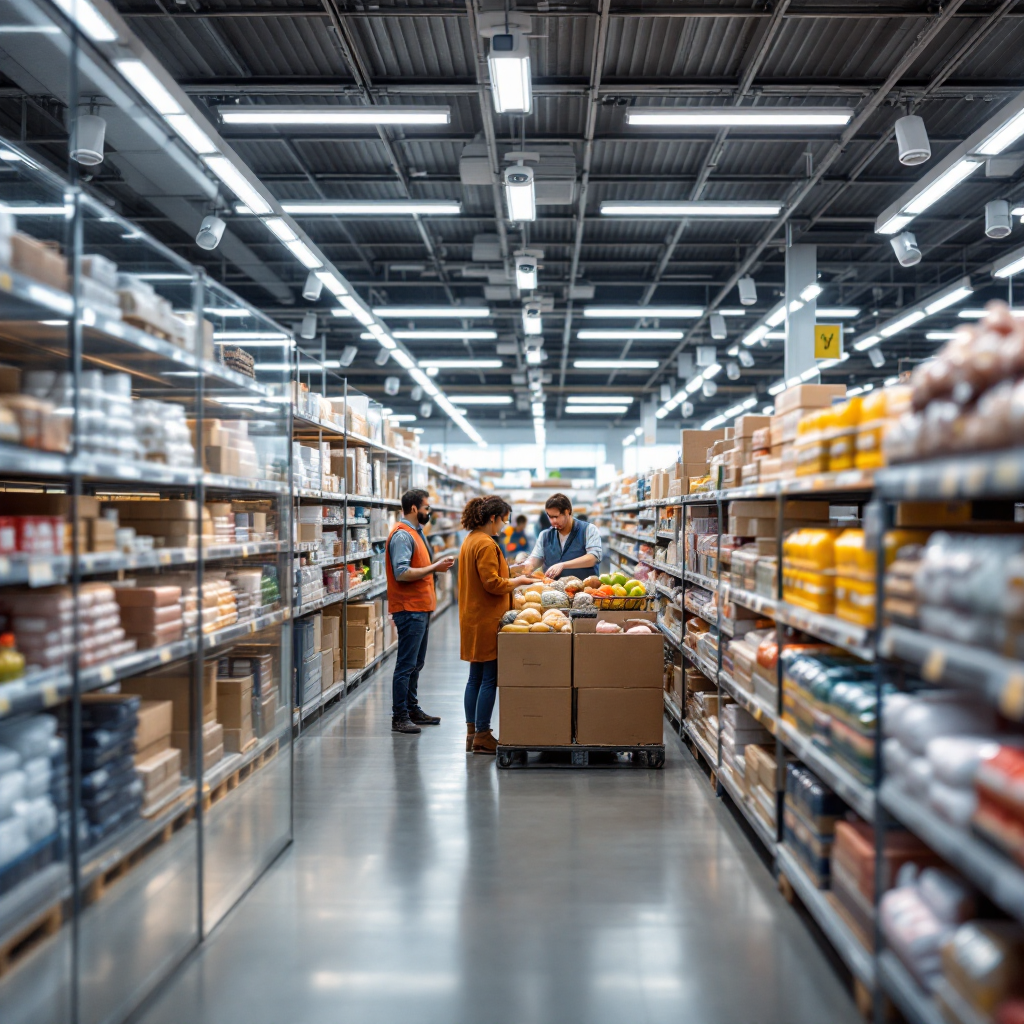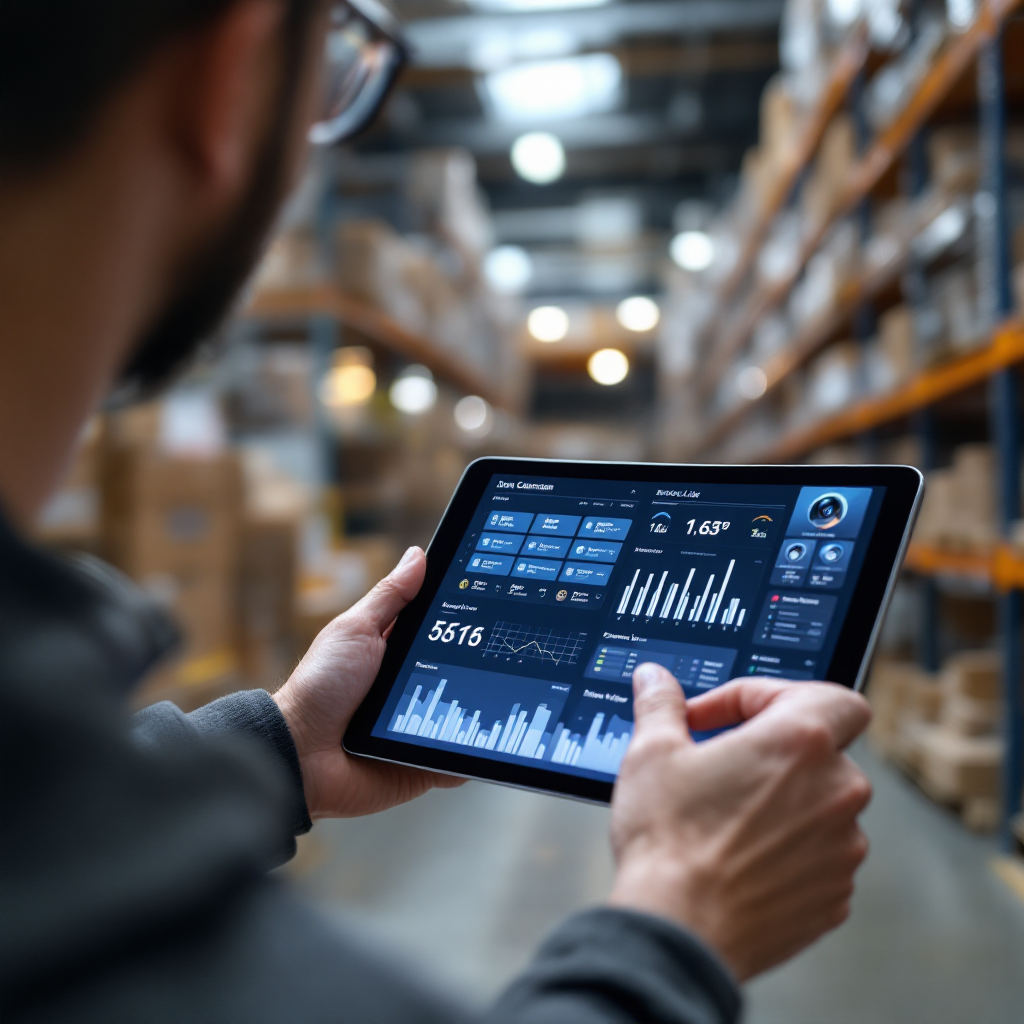Loss prevention AI for grocery chains with video surveillance
AI-Powered Loss Prevention: Transform Retail Security for Grocery Retailers
AI-powered loss prevention applies artificial intelligence tools to traditional retail security. It combines machine learning, computer vision, and analytics to reduce shrinkage and raise operational efficiency. Grocery retailers face daily pressure from theft, spoilage, and fraud. AI helps retailers by spotting patterns in video footage and transaction logs. For example, Visionplatform.ai turns existing CCTV into an operational sensor network so teams can act quickly and keep data private. Our platform uses on-prem and edge processing to meet data protection goals and to avoid vendor lock-in. It also streams structured events for operations, not just alarms.
Retailer security teams can detect suspicious activities faster. AI systems can classify objects, count people, and trigger a behavior and alert message when needed. This improves asset protection while keeping the in-store shopping experience calm. Many grocery retailers see fewer false positives when models are trained on local video. In one study, the AI-based retail loss prevention market was estimated at USD 3.4 billion in 2024, which illustrates strong investment in the field AI-Based Retail Loss Prevention Market Research Report 2033.
Computer vision helps curb retail theft by identifying actions that precede an exit without payment. When combined with point-of-sale data, AI can detect anomalies and alert staff at the optimal moment. Retail security teams can therefore proactively protect assets and enhance the customer experience. If you want to explore how video analysis helps stores, see our overview of AI video analytics for retail for practical examples and integration details.

AI vision within minutes?
With our no-code platform you can just focus on your data, we’ll do the rest
Tackling Shrinkage and Retail Loss with AI Video Surveillance and Suspicious Behavior Detection
Shrinkage in grocery chains comes from shoplifting, employee theft, and spoilage. AI video surveillance and smart analytics address each driver. Retail loss from theft and spoilage is a constant drain on margins. For instance, some solutions detect unusual shelf interactions and item concealment and then flag a suspicious behavior instance. AI video surveillance can also spot coordinated acts that match profiles of organized retail crime rings. These systems identify suspicious activities and then escalate a staff response in seconds.
Real time monitoring is vital in busy stores. AI-driven surveillance can analyze movement, hand-to-shelf interactions, and lingering at hard-to-see zones. The ability to identify concealed items on a shopper or to see repeated in-and-out visits helps teams stop shoplift patterns before losses mount. A collaborative study shows that anomaly detection can flag panic buying and odd stock movement, which helps to reduce retail loss and supply chain disruptions Using AI to detect panic buying and improve products distribution. This same approach helps detect and prevent theft and fraud.
Advanced models also reduce false alerts by learning store-specific behavior. For example, training on local Video footage means fewer mistakes at busy exits. That reduces staff interruptions and preserves the shopping experience. For implementation examples focused on shoplifting detection, retailers can learn more from our piece on shoplifting detection with video analytics. The combined result is fewer theft incidents and faster, more accurate investigations, which helps retailers protect margins and maintain trust with shoppers.
Real-Time Retail Crime Alerts at Checkout: Prevent Theft and Shoplift
Checkouts remain a hotspot for retail crime. AI systems provide real-time analysis at both manned lanes and self-checkout. When the system senses a mismatch between scanned items and a shopping cart, it can send an alert to staff. This immediate behavior and alert reduces opportunities for POS fraud and real-time theft. Staff then intervene with clear information, so confrontations stay brief and safe.
Self-checkout lanes create new challenges, since they increase the chance of accidental under-scans and intentional fraud. AI can analyze basket images and compare them to receipt data. The system then alerts a nearby employee to verify items at the exit. This reduces retail theft and improves checkout accuracy. The National Retail Federation has documented rising concern about theft trends, and many grocery retailers now add tech layers to their loss prevention efforts. According to one industry resource, AI-powered analytics let teams move from reactive to proactive work From Reactive to Proactive: How AI Is Transforming Retail Loss Prevention.
Real-time alerts can integrate into store workflows through POS and security posts. That way, alerts appear where staff already work. A measured result shows fewer theft incidents after an alert system rolled out in several chains. For advice on improving checkout monitoring and queue flow, read our guide on queue management with CCTV in checkout lanes. The combination of AI algorithms and clear staff procedures helps prevent theft while keeping customers calm.
AI vision within minutes?
With our no-code platform you can just focus on your data, we’ll do the rest
Use AI Solutions to Transform Retail Loss Prevention and Combat Theft and Fraud
Retailers who use ai solutions see faster case resolution and better ROI. Integrations link POS, inventory, and camera data so teams can correlate events. For example, a sudden stock drop combined with a matching video clip helps investigators act. Predictive analytics then score locations by risk and suggest staffing adjustments. These measures improve operational efficiency and reduce loss and theft across store networks.
Retail loss prevention teams also deploy RFID and shelf-monitoring to minimize retail shrink. AI models can detect patterns and anomalies in how products move on shelves, and then suggest reorder actions. That lowers spoilage in the food industry and supports zero-waste goals. A market study values the broader loss prevention AI market at USD 2.65 billion in 2024, which underlines the business case for these investments Loss Prevention AI Market Research Report 2033.
When teams adopt AI, they can better detect and prevent point-of-sale fraud, organized retail crime, and opportunistic shoplift events. A strong loss prevention solution links video analytics, transaction feeds, and inventory systems. Visionplatform.ai emphasizes customer-controlled models and on-prem processing so companies keep data local and auditable. This supports compliance goals while allowing custom ai models to be trained on local behavior. Practical use cases include shelf stock monitoring, back-of-house dock analysis, and queue detection, which together strengthen retail loss prevention and support asset protection.

Curb Employee Theft, Organized Retail Crime and Supply Chain Disruptions with AI and Trigo
Employee theft is a serious source of loss for grocery chains. AI can detect internal fraud by monitoring back-of-house movements and transaction anomalies. By linking door access logs, POS records, and camera events, teams can identify suspicious patterns that point to employee theft. Cameras that watch loading docks reduce losses from inventory that never reaches shelves. For examples of backroom analytics, see our work on back-of-house loading dock analytics.
Organized retail crime groups use coordinated tactics across stores. AI helps detect repeated patterns, shared descriptions, and coordinated exits. License plate recognition and ANPR can flag vehicles that appear in multiple incidents. For more on ANPR, retailers can review an approach to ANPR and license plate recognition. Frictionless checkout systems like Trigo also reduce loss by removing easy theft vectors at the payment point. Trigo’s technology can transform how shoppers leave a store, which changes the risk profile for organized retail crime.
Supply chain disruptions magnify shrinkage risk. AI that monitors shipments and reconciles delivered stock against expected goods reduces discrepancies and hence retail shrink. These tools help food retailers keep shelves stocked and minimize spoilage. In short, integrated ai systems let teams proactively address both internal and external threats, improving both asset protection and the in-store shopping experience.
Emerging Technology and AI Offers: Use Cases for Retailers and Their Retail Stores
Emerging technology trends in loss prevention include cloud-assisted analytics, edge processing, and tighter VMS integrations. AI continues to evolve, and new ai offers combine sensor data with video to improve detection rates. Vendors now offer modular solutions so retailers can pick the capabilities they need. Some systems emphasize facial recognition while others prioritize anonymized person detection to meet data protection rules. The balance between accuracy and privacy shapes deployments in the EU and elsewhere.
Retailers can leverage predictive tools to forecast hotspots for retail theft and arrange staffing proactively. Use cases span theft detection at exits, shelf-stock-out alerts, and queue-focused loss prevention. The Info-Tech Research Group and FMI publish guidance on best practices for adoption, and academic work shows measurable benefits from predictive distribution tools How AI in Supply Chain Improves Efficiency? Using AI to detect panic buying and improve products distribution.
For store teams, the practical outcome is fewer theft incidents, faster investigations, and improved operational efficiency. Platforms such as Visionplatform.ai focus on letting customers own their models and data. That supports auditability and GDPR compliance. Looking forward, adoption forecasts point to growing AI investment across grocery retailers as they seek to prevent shrinkage and enhance the customer experience. Retail teams should evaluate vendors on accuracy, on-prem processing options, and open integrations so they can scale solutions that actually reduce loss prevention efforts and support day-to-day operations.
FAQ
How does AI improve loss prevention in grocery stores?
AI improves loss prevention by analyzing video and transaction data to detect suspicious patterns and anomalies. It provides staff with timely alerts so teams can act before losses escalate.
Can AI detect shoplifting in real time?
Yes. AI-driven surveillance can identify behaviors that often lead to shoplift incidents and send real-time alerts to staff. These alerts reduce the lag between detection and response.
Are there privacy concerns with AI video surveillance?
Privacy matters and must be addressed. On-prem processing and customer-controlled models help manage data protection and support compliance with local laws.
Will AI systems reduce false alarms?
Properly trained AI models reduce false alarms by learning site-specific behavior from local video footage. That improves alert accuracy and lowers unnecessary staff interventions.
How do AI systems help with employee theft?
AI correlates access logs, POS events, and camera feeds to flag irregular actions. This makes investigations faster and more precise.
Is integration with POS required?
Integration with POS and inventory systems boosts effectiveness by allowing correlation between transactions and video events. It helps teams distinguish errors from intentional fraud.
What role does ANPR play in retail security?
ANPR, or license plate recognition, helps track vehicles linked to organized retail crime. It can reveal repeat offenders and support loss prevention investigations.
How do I measure ROI for loss prevention AI?
Measure ROI by comparing incident rates, shrinkage percentages, and investigation times before and after deployment. Reduced theft incidents and faster case closures translate into cost savings.
Do AI solutions work offline?
Many modern solutions support edge or on-prem deployments so they can run without cloud dependency. This helps meet data protection and reliability needs.
Can AI also help with inventory and supply chain issues?
Yes. AI can detect stock-outs, forecast demand, and flag supply chain disruptions to help maintain shelves and reduce waste. These capabilities indirectly support theft prevention and operational efficiency.

